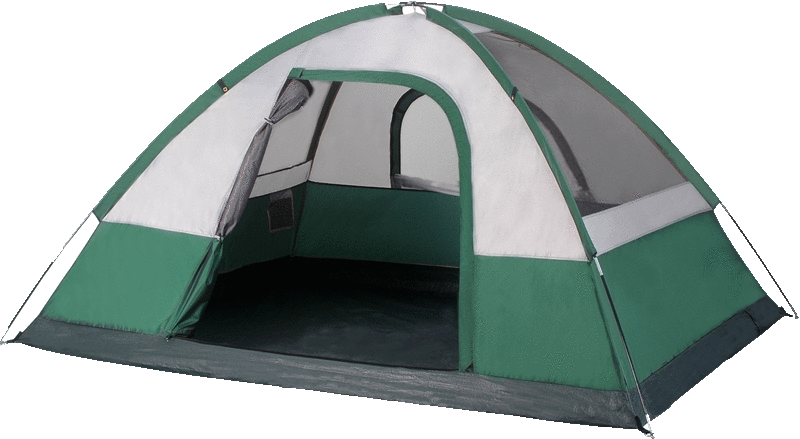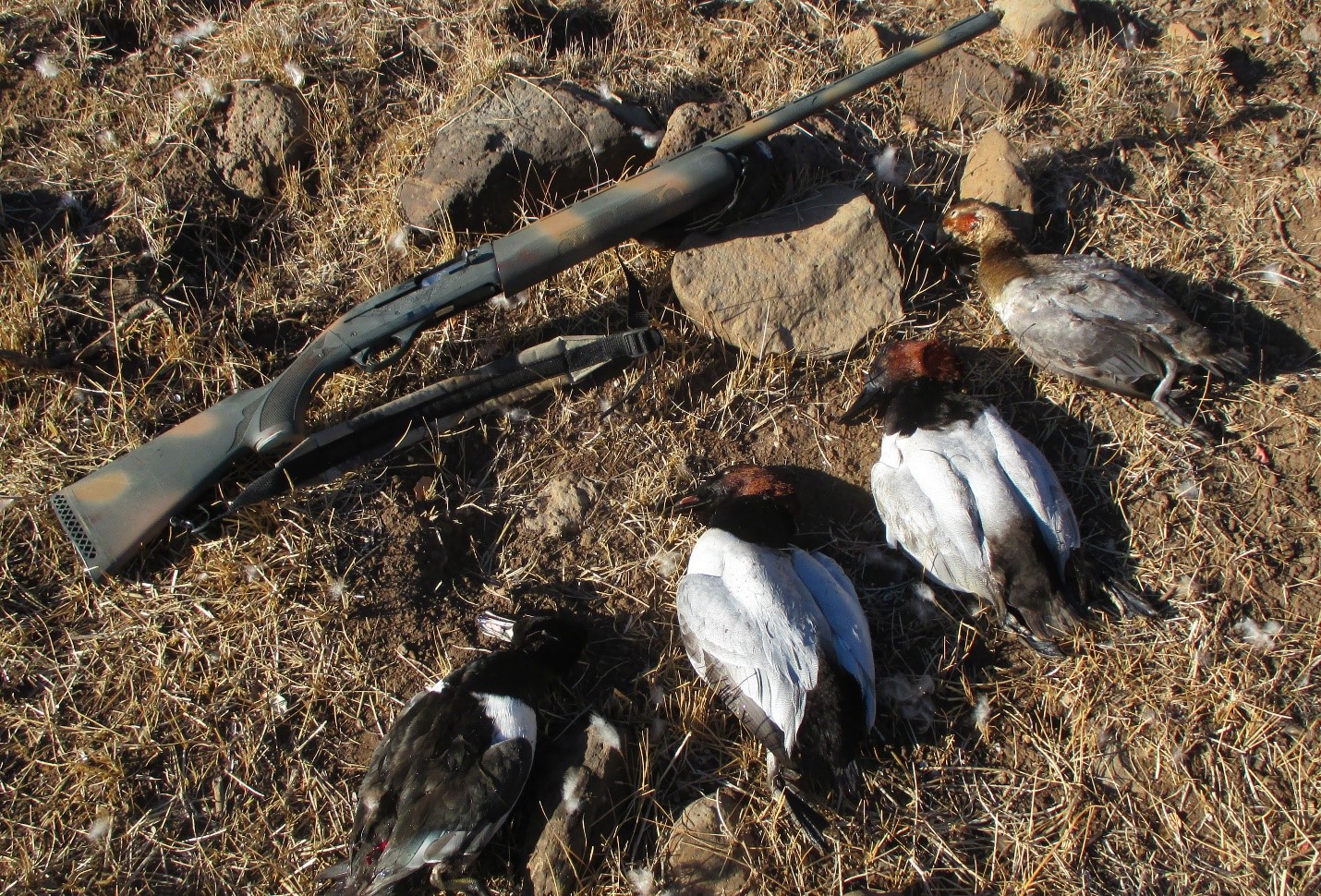2020 was an unusual year, in many ways. In Arizona we severely lacked summer
monsoon rains. Ditto for rains in the fall. With respect to hunting, typically
after deer season Ron and I shift focus towards waterfowl. In 2020 our options
were reduced noticeably. In the higher region, where we prefer to pursue
feathered critters, waterholes were either dry or way low and easily frozen from
bank to bank. And in lower elevations all but the largest were simply dried out.
It became a patience test. That is, checking the weather websites frequently to
hopefully see freezing temperatures at night ratcheting up into the thaw range.
They didn’t. So I tried Horseshoe Lake via canoe one day. Ducks loved it there,
alright. But none came into gun range.
At one time, when temps did climb from the low 20s to the high 20s, we just gave
in and invested in a high country visit. Sure enough, the first two holes we
snuck up on, which so often had produced in years past, were way down, with solid
ice cover. No ducks, no geese.
The third waterhole required a longer walk in. Our guns were now loaded with #6
steel shot, shells we typically use to finish off a downed but not yet dead bird
by purposely aiming at its head/neck. Since we had seen quail in this area a
few years back we did not consider the attempt as totally senseless. It was.
No quail, ice-covered waterhole, no nothing.
Well then, since we were already on foot, and the weather cool to prevent sweating,
we decided to ‘visit’ another waterhole in the area. Never give up! And bingo!
From over 200 steps away the binoculars revealed but a few square feet of open water
at the shallow end, with ducks on it, some mallards even. Pulse quickened along with
speed of travel as we circled around, our familiar path through the high desert, to
position ourselves unseen behind the berm. Earplugs inserted, quick visual contact,
then the signaling nod, and over the berm we stormed.
A small war ensued as the ducks, unfortunately furthest from the berm, of course
chose the option of flight. Three folded and hit the water. The fourth fell on land,
right near the edge of ice. Fifth duck was a scaup, not known to be the brightest
among the ducks and prone to fly late, almost got away, when my steel from the last
shell in the Rem 1100 reached it further out, now sailing towards ground. Darn, two
of those on the water still had their heads up, swimming towards land. We don’t want
that! On land, certainly when reaching wooded terrain with plenty of grass and brush,
ducks can perform amazing disappearance acts.
The way we were positioned, Ron went after the scaup while I ran around the pond. Too
late, both ducks made it into the thick bushy grass. #6s were now in the 1100. I
patrolled that thick stuff like a pheasant hunter. That unnerved one drake, and the
beast could still fly, though laboriously. Back over the ice he tried it. I shot too
soon, as that drake plunged onto the ice. At least he was down. A few more steps, and
the hen also busted from the almost hip-high growth. She also could still fly. This
time I waited longer, then ripped her out of the air. She hit ice but slid to the edge
– perfect; action over.
Time to introduce my short ‘retriever’, a telescopic 6’ 6” fishing rod, residing in my
daypack along with Mr. Heddon, a topwater lure, looking like a fat cigar with huge
treble hooks midship and back. Due to those hooks he travels inside an empty CCI 100ct
plastic ammo box. Now quickly employed and attached to the line, the duck on the water
got hooked on the first very short cast. On my way back around, I picked up one of Ron’s
mallards that had fallen on land, barely. Finally, I picked up my hen. Ron returned,
without scaup. We later looked for that scaup together, covering a lot of ground, did
not find it.
Then I learned something. Mr. Heddon is really good with ducks on water. I cast past
the duck, line up the fishing line with the duck, slowly run him into said duck. Usually
by cast #3 one of his hooks imbeds on something on the targeted duck, at which time I
slooowly retrieve, to keep the drag and therefore force on the hook to a minimum. Now
Heddon was sent after the drake on the ice. Casting took nothing as he slid across the
ice with near zero friction. In fact I did not want the lure to impact the ice. If it
would break through, hook the ice, goodbye lure. But with the duck on top of the ice
those treble hooks would not ‘fetch’.
By the time I finally had the bird hooked, after about twenty casts, Ron had already
plucked two ducks. Drag of duck on ice is surprising, talk about a severely bent rod.
Anyway, four mallards came home with us that wonderful day.
Encouraged by this we went back as soon as non-freezing condition were in the forecast.
Indeed, the waterholes no longer had any ice. But neither were there any ducks, leave
alone geese, at the first 3 holes we snuck up on. Number 4 that day gave us action,
however. When our guns were empty, reloaded, and fired a few more times, Mr. Heddon’s
services were again required. This time I remembered to take a picture.
For the rest of that day only one more hole had ducks feeding there, all scaup. You are
only allowed two of them per day. Therefore, I quit shooting after dropping one, and Ron
did get his two.
With the water open, I returned to God’s beautiful creation a few days later, by myself.
Maybe we had scared too many off since I found no ducks on all but two waterholes. At
the first one, being alone, I slowly emerged over its berm. Fastest one to flee the
scene was a teal. Not fast enough, as my steel hail stopped the attempt. That shot
scared up the rest of the bunch. Two more shots, two more ducks down. Now gun and
waterhole were empty. We typically pluck our ducks immediately. I did so that time,
and only after I was done took a picture.
At the second hole things went south. The ducks had been far from the berm, and I only
knocked down one. This one dropped into the open water, dead. Unfortunately, the wind
drifted it away, towards large weeds in the middle of the waterhole. I quickly deployed
Mr. Heddon. As intended my cast went past the duck, but did not ‘hook’ on retrieval. A
hasty second cast, whereupon Heddon ‘found’ a submerged/ floating thick stalk, and sunk
its hook deep into that. The stalk won the ensuing tug of war – broken line, lost lure,
no duck. That sort of summed up the 2020/2021 waterfowl season for me. I drove home.


![]()




